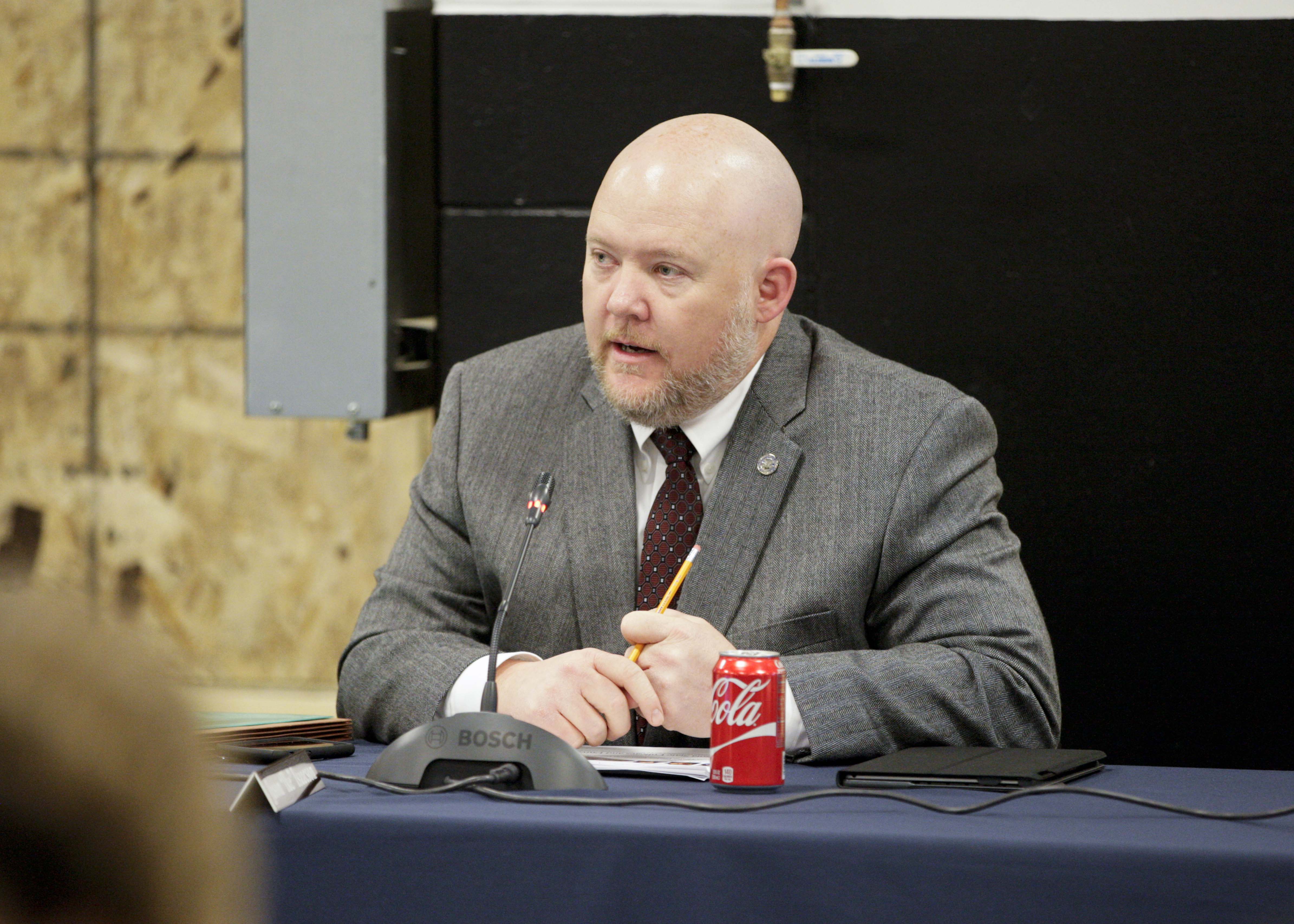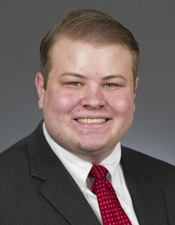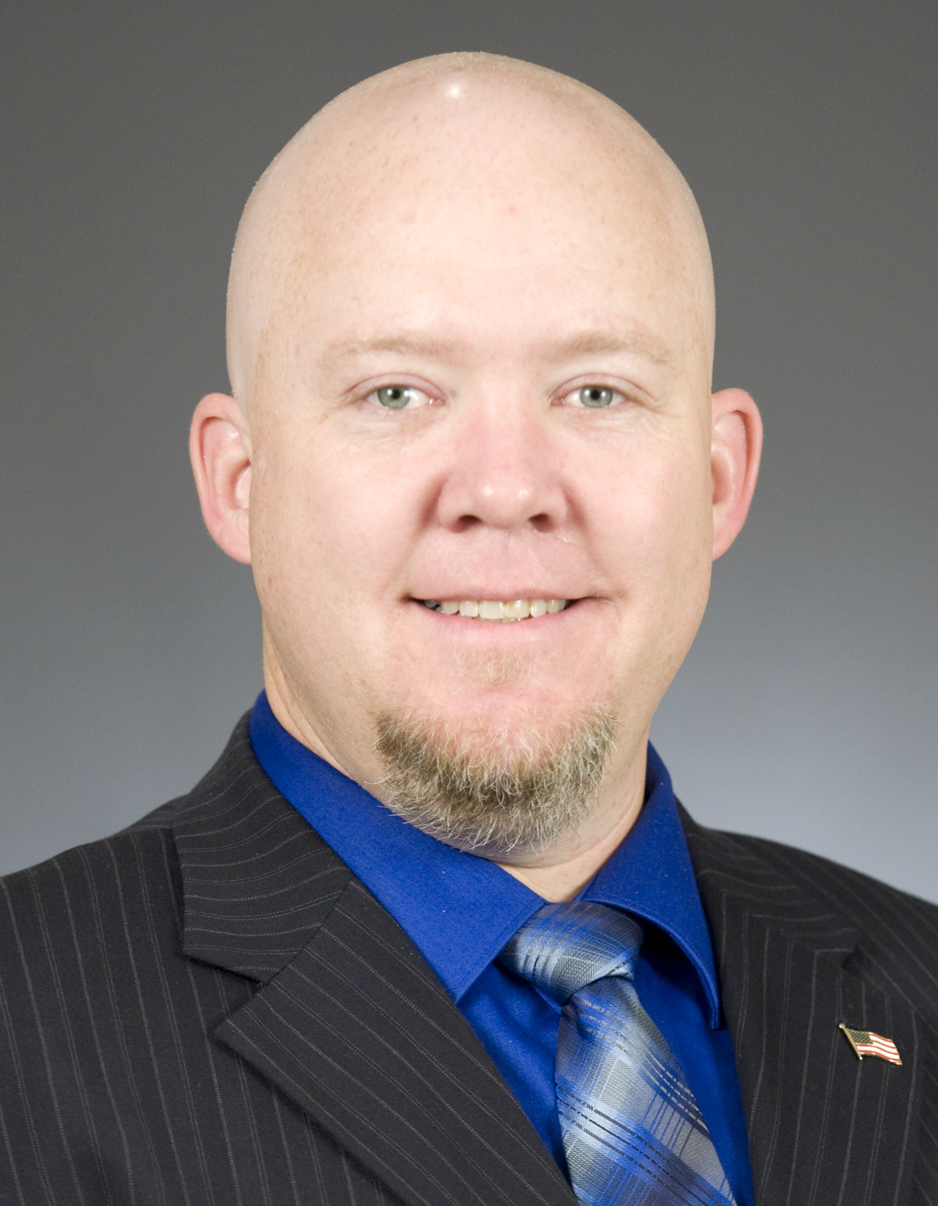From campus to the Capitol

Drew Christensen and Jason Isaacson were among a gathering this week where faculty and student leaders from colleges and universities around the state testified before the House Higher Education Policy and Finance Committee about myriad issues confronting the post-secondary landscape.
But the representatives weren’t there as much to talk as they were to listen.
Each believes their current roles away from the Capitol help inform them on important policies with respect to higher education in Minnesota.
“Many of the students I teach, they are struggling to make ends meet, and they are in school because they want to improve their lives,” said Isaacson (DFL-Little Canada), a communications instructor at Century College in White Bear Lake. “I’ve been in their shoes, I’ve walked on that side. That’s why I feel compelled to help anybody who is on that side right now.”
Christensen (R-Burnsville) has plans to graduate this summer from the University of Minnesota with a B.A. in political science. At age 21, he is the youngest current member of the House and one of the youngest lawmakers in state history.
After campaigning last year on his ability to bring a first-person perspective to issues concerning college students and their families, he has already drawn on his current experience to help inform his work on the House Higher Education Policy and Finance Committee.
“I talk with students every day, and with many constituents who are parents of college students and soon-to-be college students,” Christensen said. “They are all very concerned about the cost of college. Especially at our public schools, like the University of Minnesota, but elsewhere as well.”
Those concerns focus specifically on the rising cost of tuition for colleges and universities across the spectrum as well as rising student debt levels.
Undergraduate students attending two- and four-year schools located throughout the state shared with the committee Tuesday their stories of what it’s like to face the uncertainties of heading into the workforce with a levels of debt many admitted they are still struggling to comprehend.
Many students advocated for tuition freezes at the Minnesota State Colleges and Universities (MnSCU) system and the University of Minnesota. They also asked legislators to consider changes to the grant formula that would increase awards to living and miscellaneous expenses.
“Students who do not have families that can help them out are forced to work full-time and push their graduation dates back so they can afford to pay for school,” said Kari Cooper, a student at Bemidji State University and chair of the Minnesota State University Student Association. “These are students who chose to stay in Minnesota for their schooling and are struggling to get a valuable education that can lead them to a successful and rewarding career.”
Students at two-year colleges also claim to be taking on unprecedented levels of debt that stems from increased tuition at community and technical colleges.
William Tully said he transferred last year to Minneapolis Technical and Community College from a four-year school in Florida to be closer to his family. He quickly learned that the cost to attend a two-year school in Minnesota is among the highest in the nation.
“When I discovered that I would be paying twice as much at a community college in Minnesota than a four-year institution in Florida, I was shocked,” said Tully, who is studying business. “Affordability is a priority for me.”
Such stories are not uncommon among the students Isaacson teaches.
“Community colleges are the last defense of the middle class,” said Isaacson, who was first elected in 2012. “It’s the one place that provides the support for those folks that are re-tooling, who want to have a career, who want to make something of themselves and do something meaningful. So we can’t forsake that, ever.”
Many problems identified, solutions harder to come by
While nearly all testifiers advocated for tuition freezes at the university and throughout MnSCU, some students advocated for reform of remedial course policies and financial aid formulas that they say saddle them with extra debt and don’t count as credits toward graduation.
Jamesia Jackson, a student at Inver Hills Community College, said she wasted nearly all of her Pell Grant allocation on paying for a number of remedial courses she had to take after recognizing the high school she attended had not adequately prepared her for college.
“The current system is not designed to support all students. It allows those in need of remedial courses needs to slip through the cracks, and as a consequence so many struggle to move forward and finish college.”
Christensen said he sees expansion of concurrent enrollment options as a solution.
“I personally saved a lot of money by taking advantage of concurrent enrollment options that counted toward college credit while I was in high school,” he said. “This is definitely something we need to encourage our high school students to take advantage of, especially those students who can use that opportunity to eliminate the need to have to enroll in remedial courses after high school graduation.”
Balancing “quality” and “affordability”
MnSCU and the University of Minnesota leaders have requested enough state funding to continue a tuition freeze for the next biennium. For university undergraduates that would equate to a $2,100-$2,400 savings each of the next two years.
Christensen is not opposed to the idea, but he referred to increased funding for the university to cover a tuition freeze as a “Band-Aid” solution to a larger problem – bloated administrative costs.
“I am encouraged by (University President Eric) Kaler’s call for a reduction of administrative spending by $90 million, and from what I have heard talking with various regents, they are on track to do that,” Christensen said. “That’s a good start; but I think the university really needs to look at some of the systemic problems I think exist in their administrative spending. They should use that to try to be able to keep tuition down, not just asking for more money.”
Isaacson downplays the idea that administrative costs are the sole reason for rising tuition.
“I do believe that increased efficiencies in administrative costs are important, but the disinvestments in higher education we have seen over the last decade as whole goes far beyond whether a school’s administration budget in bloated.”
Isaacson stopped short of saying he’d support a DFL-sponsored Senate bill that proposes to fund the first two years of community and technical college for in-state high school graduates. But he did say that legislators need to pay attention to the needs that colleges and universities have in making sure post-secondary education remains accessible to all while retaining the quality services it provides to preparing students to adequately enter the workforce.
Related Articles
Search Session Daily
Advanced Search OptionsPriority Dailies
Ways and Means Committee OKs proposed $512 million supplemental budget on party-line vote
By Mike Cook Meeting more needs or fiscal irresponsibility is one way to sum up the differences among the two parties on a supplemental spending package a year after a $72 billion state budg...
Meeting more needs or fiscal irresponsibility is one way to sum up the differences among the two parties on a supplemental spending package a year after a $72 billion state budg...
Minnesota’s projected budget surplus balloons to $3.7 billion, but fiscal pressure still looms
By Rob Hubbard Just as Minnesota has experienced a warmer winter than usual, so has the state’s budget outlook warmed over the past few months.
On Thursday, Minnesota Management and Budget...
Just as Minnesota has experienced a warmer winter than usual, so has the state’s budget outlook warmed over the past few months.
On Thursday, Minnesota Management and Budget...

